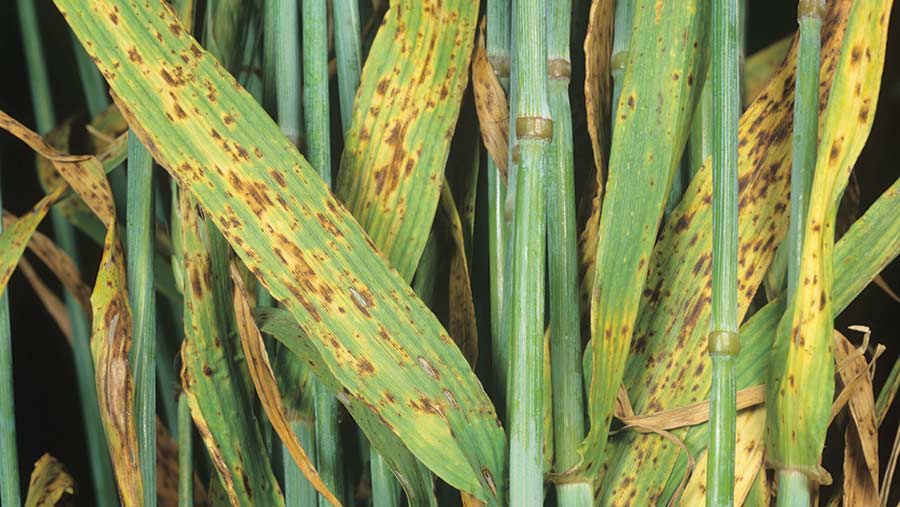Tips on how to correctly identify ramularia in barley
 Barley infected with ramularia. © Nigel Cattlin/Alamy
Barley infected with ramularia. © Nigel Cattlin/Alamy Correctly identifying ramularia in barley is a vital part of its control, as symptoms can easily be confused with other diseases.
The foliar disease has been gradually spreading across the world, appearing in the UK in the 1990s while Australia saw it for the first time last season.
It can cause crop damage, particularly to the upper leaves after flowering, leading to extensive losses in yield and quality. Trials have shown yield losses of up to 0.5t/ha in barley.
See also: How a neonic ban will affect beet and cereal growers
However, ramularia leaf spot can be easily mistaken for net blotch, or physiological stress during the earlier stages of the disease.
Consequently, Fiona Burnett, disease expert at Scotland’s Rural College, believes the disease is being under reported due to unfamiliarity with symptoms.
“Accurate diagnosis is key, as farmers need to build up their experience of the disease,” she said.
Early symptoms comprise small brown pepper spots on the upper leaves, before developing in the characteristic mature symptoms.
Prof Burnett says there are five key rules to distinguish mature symptoms from the other foliar diseases seen in barley crops.
- Rectangular: Lesions characteristically take on a rectangular shape. Net blotch and tan spot lesions are not rectangular
- Ring of chlorosis around lesion: Lesions are typically surrounded by a yellow ring, as the disease draws nutrients to itself
- Necrosis is right through the leaf: A unique characteristic is that lesions show on both sides of the leaf. Sun scorch and physiological spots are usually just on the upper surface so if you turn the leaf over and the spots vanish then it is not ramularia
- Reddish/brown colour
- Restricted by leaf veins. In contrast, net blotch and tan spot lesions spread across leaf veins
For more on how to manage the disease this spring, see the 26 February edition of Farmers Weekly magazine.

